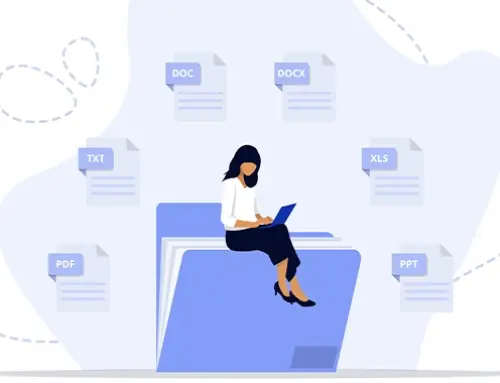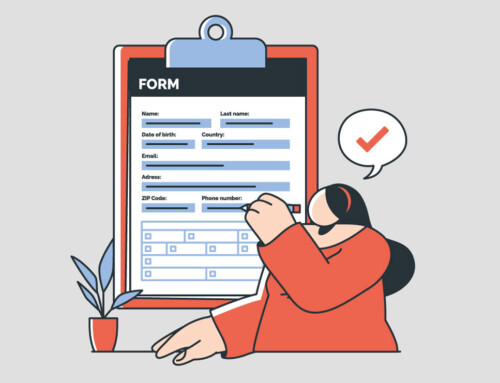Contents
Breaking Down Law Firm Expenses: The Difference Between Hard and Operational Expenses
Running a law firm means juggling numerous expenses, all of which can influence the firm’s financial well-being. To keep things transparent with clients, manage budgets effectively, and stay profitable, it is essential to understand the difference between hard and operational expenses. These two types of expenses shape how firms function and bill their clients. In this article, we will break down what hard and operational expenses and how they impact the day-to-day operations of a law firm.
What Are Hard Expenses?
Hard expenses, also known as direct costs, are the tangible, out-of-pocket expenses that a law firm incurs on behalf of a client. These expenses are typically paid directly to third-party vendors and can be easily documented. Since hard expenses are directly related to a client’s case, they are often passed on to the client as part of the final bill, giving the client a sense of control over their legal journey.
Common examples of hard expenses include court filing fees, any fees associated with filing legal documents with courts or administrative bodies, and expert witness fees, which cover payments for experts who testify or provide reports for cases. Additionally, medical records fees arise from obtaining medical records and reports necessary for litigation, while deposition fees include charges for court reporters or videographers involved in depositions. Travel expenses, such as airfare, hotel accommodations, and meals incurred while traveling for a case, also fall under hard expenses.
Law firms typically bill these expenses to clients at cost, ensuring a fair and transparent process. This means the firm does not mark up the amount paid but recovers what was spent. Hard expenses are easy to track and justify since they involve payments for specific services or goods.
What Are Operational Expenses?
Operational expenses, on the other hand, are less tangible and are typically related to the law firm’s internal operations. These are expenses that a law firm incurs indirectly as part of handling a client’s case, and they can significantly impact the firm’s operations. Unlike hard expenses, operational expenses are not paid to third parties but arise from the law firm’s use of its own resources.
Common examples of operational expenses include photocopying and printing, which refers to in-house duplication or the printing of documents for a case. Postage and shipping costs are standard, encompassing expenses incurred when sending documents via mail or courier services. Telephone and communication charges, such as long-distance calls or specialized communication tools, can also be considered operational expenses. Another example is legal research costs, such as subscription fees for online legal databases like Westlaw or LexisNexis. Additionally, administrative staff time is frequently categorized as operational expenses, including costs associated with secretarial or paralegal time spent on a case (especially when not billed hourly).
Operational expenses are often more difficult to itemize and justify. Law firms may have policies for calculating these expenses, but they are generally viewed as part of the firm’s overhead. However, it is important to note that these operational expenses, if not managed effectively, can significantly impact a law firm’s profitability.

How Law Firms Manage Hard and Operational Expenses
Effective management of hard and operational expenses is essential for law firms, maintaining accurate billing and nurturing strong client relationships. Understanding the distinction between these two types of expenses helps avoid potential billing disputes and ensures transparency.
Billing Practices
Law firms typically bill hard expenses as separate line items on client invoices. This approach provides transparency, allowing clients to see the specific expenses related to their case. Since these expenses are directly tied to a case’s progression, clients usually find them justifiable.
In contrast, law firms handle operational expenses differently depending on their internal policies. Some firms absorb these expenses into their hourly billing rates, while others itemize them separately on client invoices. When billed independently, law firms must communicate these charges to clients, as operational expenses can sometimes appear less tangible or more challenging to justify than hard expenses. Transparency and clear explanations help prevent misunderstandings about the necessity of these charges.
Internal Tracking
Accurate tracking of both hard and operational expenses is key to maintaining profitability. Hard expenses are relatively simple to monitor since they involve direct payments to third parties, such as receipts for filing fees or expert services. These expenses can easily be traced and billed back to clients.
Operational expenses, however, require more detailed record-keeping. Since they often involve internal resources or smaller, recurring expenses like administrative work or legal research subscriptions, firms must use meticulous tracking systems to capture these expenses accurately. Many law firms rely on accounting and legal practice management software to automate and streamline the tracking of operational expenses, ensuring that no expense goes unnoticed.
By combining transparent billing practices with robust internal tracking, law firms can efficiently manage hard and operational expenses, ensuring client transparency while maintaining financial health and profitability. Effective lawyer expense tracking helps ensure that all billable expenses are accurately recorded and invoiced, reducing the risk of financial discrepancies and improving client trust.
Why the Distinction Matters
For law firms, distinguishing between hard and operational expenses is essential for financial planning and client communication. This distinction affects how clients perceive their bills and impacts a firm’s bottom line.
Itemizing hard and operational expenses can help avoid confusion and disputes, allowing clients to see the value in the services they are receiving. Since hard expenses are tied directly to their case, clients may be more willing to accept them, while operational expenses may require further explanation.
Effective cost management ensures that firms are not losing money by undercharging for their services. Hard expenses are typically billed at the exact amount paid, but firms must carefully consider how they charge for operational expenses, as they can contribute significantly to overhead.
Understanding the distinction helps law firms’ budget accurately. Since hard expenses fluctuate based on case activity, they are typically harder to predict. Operational expenses, often tied to the firm’s general operations, can be easily managed and forecasted.
Creating a comprehensive law firm expenses list allows firms to track both hard and operational expenses, helping to manage budgets more effectively and ensure transparent billing for clients.
Best Practices for Managing Law Firm Expenses
Here is an expanded version that integrates the points you provided into the best practices for managing law firm expenses:
Maintain Clear Invoicing Policies
By clearly outlining your firm’s billing practices, including what constitutes hard and operational expenses, you reassure clients about the transparency and fairness of the billing process. This ensures they know the types of operational expenses that will be directly billed to them. Break down all expenses on client invoices clearly, showing exactly what they are being charged for. This transparency helps build trust and reduce disputes over billing.
Automate Expense Tracking
Use tools like RunSensible, Clio, or PracticePanther to automate expense tracking. These platforms can automatically log both hard and operational expenses, ensuring all billable expenses are accurately captured. Automating expense tracking for law firms not only reduces the likelihood of errors but also saves time, allowing you to focus on other areas of your practice without the administrative burden of manual expense logging. This time-saving aspect can be a relief in your busy schedule. Implementing automated expense tracking for law firms is essential for accurately managing both hard and operational expenses, ensuring transparency, and improving overall financial efficiency.
Communicate with Clients
At the start of a case, it is crucial to provide clients with a comprehensive overview of the potential costs they may incur. This includes court fees, deposition expenses, expert witness costs, and administrative charges like copying and mailing fees. By avoiding legal jargon and explaining why certain costs are necessary and how they benefit the client’s case, you can keep clients informed and build trust. It is also important to keep clients informed of significant expenses as the case progresses, especially if costs exceed initial estimates.
Review Billing Regularly
Regularly audit your firm’s billing practices to ensure you’re capturing all billable costs accurately. This includes both direct expenses related to the case and overhead costs that may need to be factored into your rates. If you notice a pattern in unbilled expenditures or inconsistencies in your billing, it may be time to reassess your rates or billing policies. Consider adjusting rates or changing policies to reflect better the cost of doing business. Pay attention to feedback from clients regarding billing. Address concerns and adjust practices if necessary to maintain good client relations.
Implement Strict Expense Approval Procedures
Set policies that require expense pre-approval for high-cost services or resources, such as hiring expert witnesses or outsourcing legal research. This helps control unnecessary or excessive spending. Track expense submissions from attorneys and support staff to ensure adherence to firm policies. Regular reviews prevent unauthorized spending and ensure costs are reasonable.
Use Fixed-Fee Structures When Appropriate
In some cases, a flat-fee structure may be more efficient and appealing to clients than traditional hourly billing. Fixed-fee arrangements can help control costs while providing clients with predictability. This predictability can make clients feel secure about the financial aspect of the service. If adopting fixed fees, ensure that all potential costs are accounted for in the initial price to avoid unanticipated financial losses.
Reduce Subscription and Membership Costs
Review the value of your firm’s professional memberships, software subscriptions, and legal research tools. Eliminate unused services to avoid unnecessary ongoing costs. Negotiate discounts for bulk services, annual memberships, or long-term subscriptions to reduce recurring expenses.
Outsource Non-Essential Tasks
Consider outsourcing specialized legal tasks like research, document drafting, or paralegal work. This can significantly reduce the cost of maintaining full-time staff. Virtual assistants can handle administrative tasks such as scheduling, client intake, and billing, allowing you to cut back on in-house administrative costs.
Train Employees on Cost Management
Empower your team with the knowledge and skills to manage expenses effectively. By educating them on the importance of cost management and how small oversights can add up, you give them the tools to make cost-effective choices in travel, office supplies, or technology use. Establishing firm-wide policies that promote efficiency, such as encouraging electronic communication over mailing hard copies or using video conferencing to reduce travel costs, further empowers your team to contribute to cost savings.
Adopt a Cloud-Based Practice Management System
Cloud-based legal management systems like RunSensible offer a flexible and cost-effective alternative to maintaining in-house servers and IT staff. With their lower upfront costs and scalability, they can adapt to your firm’s growth. By using cloud-based tools, law firms can minimize the need for expensive on-premises hardware and ongoing IT maintenance, significantly reducing technology-related expenses and providing a reliable, adaptable solution for your firm’s needs.
Apply Cost-Saving Measures for Travel and Conferences
Whenever possible, replace in-person meetings with virtual meetings using platforms like Zoom or Microsoft Teams. This cuts down on travel expenses like airfare, lodging, and meals. Choose local conferences and legal seminars instead of those that require travel. If long-distance travel is necessary, plan ahead to secure discounts on flights and accommodations.
By following these best practices, law firms can significantly reduce unnecessary expenses, optimize their financial management processes, and ensure profitability while maintaining a high level of service for clients.
Tracking Your Hard and Operational Expenses with RunSensible
Managing law firm expenses effectively is critical for maintaining profitability and transparency. With RunSensible, law firms can efficiently track and categorize both hard and operational expenses, ensuring that all billable expenses are accurately captured and invoiced. Hard expenses, such as court filing fees, expert witness charges, and travel expenses, are easily tracked through RunSensible’s expense management tools, allowing firms to bill clients directly without markup. Operational expenses, like internal administrative work, legal research, and communication charges, can also be logged and tracked systematically, reducing manual errors and streamlining the billing process. By leveraging RunSensible’s automation and expense tracking features, law firms can better manage both types of expenses, ensuring operational efficiency and improved financial transparency with clients.
Final Thoughts
Understanding the difference between hard and operational expenses is essential for law firms to maintain transparency with clients, manage budgets effectively, and stay profitable. Hard expenses, such as court fees and expert witness expenses, are easily documented and passed on to clients. In contrast, operational expenses, like administrative time and research subscriptions, require more meticulous tracking. Law firms can manage these expenses by implementing clear invoicing policies, automating expense tracking, and regularly reviewing billing practices. Distinguishing between these expenses ensures better financial planning, improves client trust, and helps sustain a profitable practice.
Disclaimer: The content provided on this blog is for informational purposes only and does not constitute legal, financial, or professional advice.







